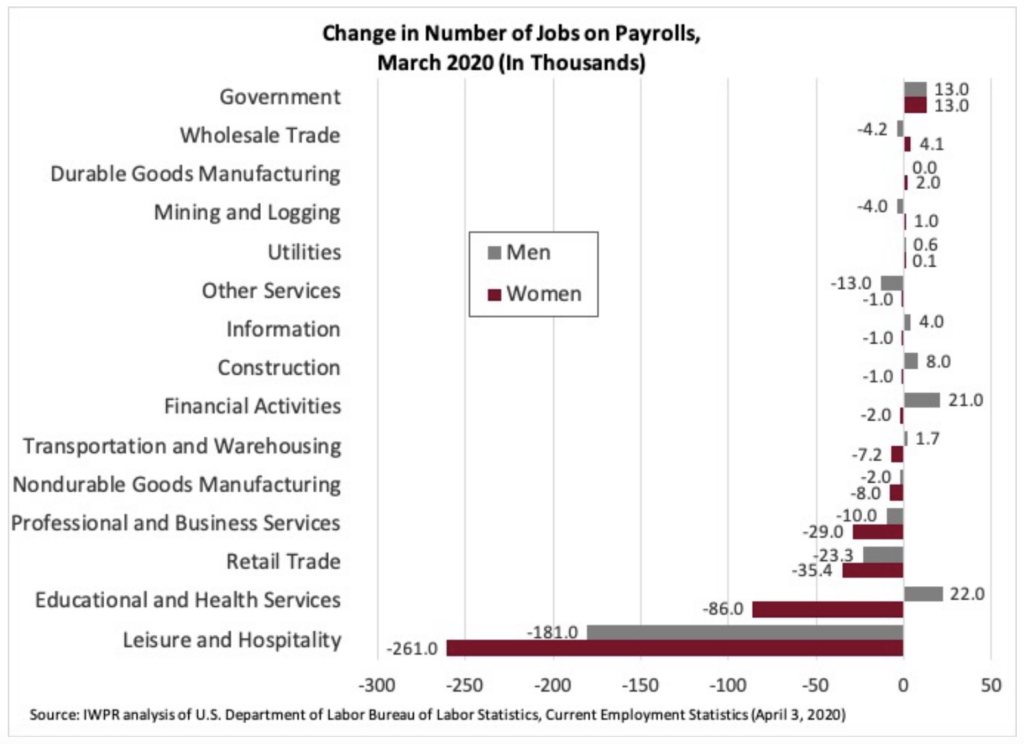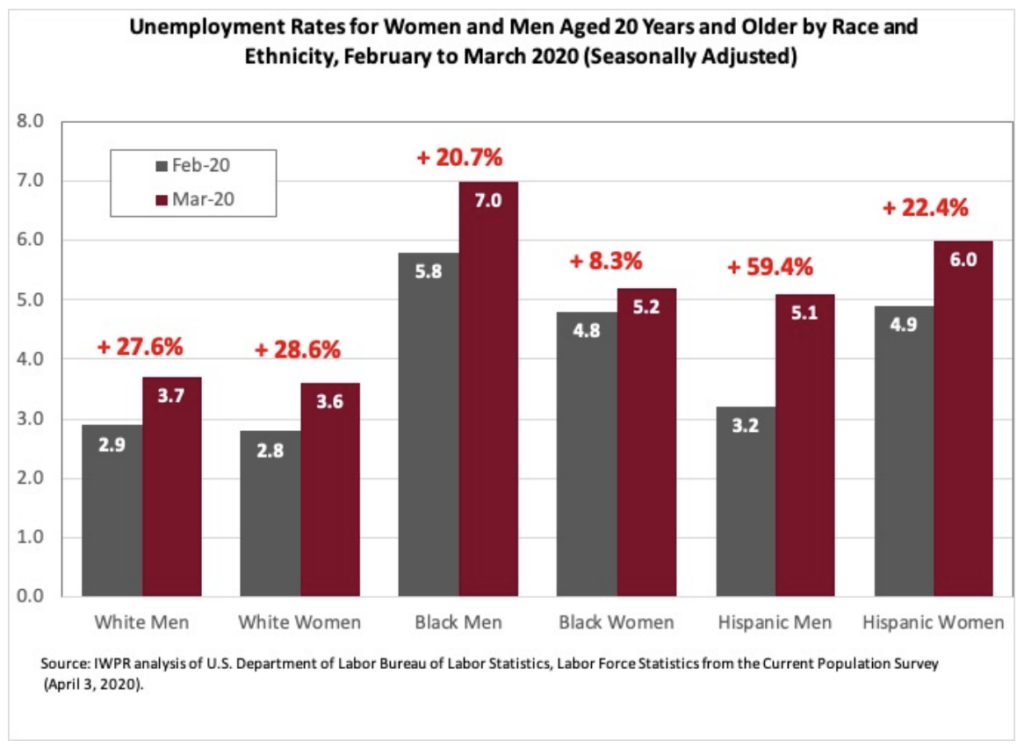
The coronavirus has dealt a massive blow to U.S. economy, resulting in dramatic job losses and sharp rises in unemployment for both women and men since February.
But so far, women workers are paying the biggest price.
Of the 701,000 jobs that were lost altogether in the months of February and March, the majority—60 percent—were held by women.
These findings, from a study conducted by the Institute for Women’s Policy Research and released Thursday, show:
“While these estimates of job losses are already outdated—since their collection in the second week of March new applications for unemployment reached almost ten times that level—they point to the critical role of gender in understanding the impact of the COVID-19 crisis. Women’s job losses outnumbered men’s in almost all sectors of the economy.”

While women’s job losses outnumbered men’s in almost all sectors of the economy, the biggest job losses were experienced in leisure and hospitality.
Women in retail, professional and business services and non-durable goods manufacturing were also hit particularly hard.
In fact, while women lost jobs in four industries—education and health services, financial services, construction and information—men’s employment in these sectors actually grew.
The Fuller Project, a women-focused research group, reported similarly that data broken down by states also show women making up a significant majority of unemployment claimants during the first weeks of the closures.
“In Minnesota, New Jersey and Virginia, women were nearly two-thirds of the 267,000 new unemployment applicants during the week ending March 21, according to statistics provided by agencies from each state. That’s an estimated 21 to 39 percentage points above what would be the norm for those states.
“In New York, state data shows more than half of the 450,000 people who filed new claims for unemployment during the last two weeks of March were women. In the previous 25 years, their share of unemployment recipients that month had never been higher than 40 percent, federal data shows.
“Oregon sent statistics that also indicate women became the majority of new unemployment applicants, whereas typically during the spring they are just over one-third of applicants.”
Given this initial evidence, advocacy groups say that it’s important that get more detailed data about who lost their jobs, and why. Without it, they say, legislation aimed at helping these workers will “miss the mark.”
“This data is readily available, in the unemployment databases of every state. Yet, billions of dollars’ worth of coronavirus relief is being legislated right now, in the complete absence of this information.
“For instance, the Families First Coronavirus Response Act requires certain employers to provide paid or partially-paid leave for pandemic-related reasons, such as if the employee or a family member who requires care becomes ill. It provides for up to 12 weeks of partially-paid leave from work to care for children home from school.
“But exemptions mean that employers of as many as 80 percent of the workforce do not have to provide these protections. This includes healthcare companies and large restaurant, retail, and hospitality chains — all major employers of women that were hit particularly hard by the coronavirus shutdowns.”
Hispanic Women and Black Men Hit Hardest

People of color—particularly Hispanic women and Black men—were impacted even harder than their white counterparts.
The IWPR study reads:
“Unemployment data from the household data … find a sharp increase in the rate of unemployment for women and men of the largest racial and ethnic groups since February, as well as substantial differences in the level of unemployment.
“Hispanic women have the highest rate of unemployment among women (6.0 percent, a 22 percent increase in 4 weeks to mid March).
“Unemployment for Hispanic men saw the sharpest increase (59 percent) and reached 5.1 percent.
“The rate of unemployment for Black men (7.0 percent) is almost twice as high as the rate for White men (3.7 percent) and White women (3.6 percent).
“Black women’s unemployment saw the lowest monthly increase of just 8.3 percent, but at an unemployment rate of 5.2 percent is also much higher than the rates for White women and men.”
Young Workers
Another group hit hard by coronavirus-related job loss: young workers.
“Young workers were … are the only group currently with rates of unemployment in the double digits. The rate of unemployment for young women ages 16 to 19 is 14.3 percent, compared with 4.0 percent for women aged 20 and older. (The rates for men are the same).
“Unemployment also rose sharply for part-time workers. Young workers are particularly likely to work part-time. The job losses in Leisure and Hospitality, and in Retail are likely to have a particularly severe impact on younger workers.”
For women and men workers alike, their post-coronavirus futures will depend a lot on whether they have a job to go back to.
“This is not like normal times when people are unemployed and that means that they’re pounding the pavement trying to find work,” said University of Michigan economist Betsey Stevenson. “People aren’t able to go to work and we’re trying to figure out who’s going to be easily recalled and who’s going to be able to financially make it until they’re recalled.”
The coronavirus pandemic and the response by federal, state and local authorities is fast-moving.
During this time, Ms. is keeping a focus on aspects of the crisis—especially as it impacts women and their families—often not reported by mainstream media.
If you found this article helpful, please consider supporting our independent reporting and truth-telling for as little as $5 per month.





